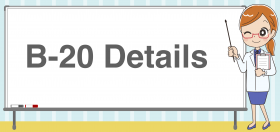 Below are important clarifications on Canada’s new B-20 mortgage rules.
Below are important clarifications on Canada’s new B-20 mortgage rules.
Most of this stuff was not explicitly discussed in OSFI’s announcement yesterday. But if you’re getting a mortgage or HELOC, it’s need-to-know info.
- Amortization Limits: One way to partially mitigate the new stress test is by extending your amortization. “OSFI has not included specific references to a ‘qualification’ amortization rate in its final Guideline B-20. We will be monitoring FRFIs’ practices as the guideline is implemented,” the regulator says. Also, “There is no regulatory limit on amortization for uninsured mortgages.” But lenders do need to stress test with the amortization in the borrower’s mortgage contract. In other words, a lender can’t stress test you with a 35-year amortization if your mortgage contract states 25 years.
- Long-Am Comeback?: Could we see a return of 35-year amortizations at the major banks? I doubt it, but we could certainly see long-ams pop up at more second-tier lenders. And if they do, those lenders will charge more for this flexibility.
- Down Payment Rule: OSFI tells us, “Under B-20, the combined loan-to-value of the loans (from all lenders) secured against the property cannot exceed legal, guideline or the [federally regulated lender’s] own limits, with 80% LTV for uninsured loans being a legal limit. A 70% LTV + 10% LTV [combination of mortgages], for a total of 80% would be fine, so long as the combined LTV is not in excess of any other internal limits the FRFI may have established.” In other words, federal lenders must not lend to someone who they know is getting a second mortgage if the total LTV is over 80%.
- Key Exceptions: The 80% LTV limit only “applies at origination,” OSFI says. “Second mortgages after the funding occurs are fine.” Another exception is “where the other lender is a municipal, territorial, provincial or the federal government (e.g., part of an affordable housing program).” And of course, this co-lending LTV cap does not apply to credit unions and other non-OSFI regulated lenders. So, depending on your location and credit profile, mortgage brokers can still arrange a lower-cost first mortgage to 80% LTV and a higher-cost second mortgage of 5-10% more, for 85-90% LTV total. But the overall interest rate will be much higher than a bank mortgage at 80% LTV or an insured mortgage at 85% LTV.
- Other Workarounds: OSFI’s prohibition on co-lending applies when part of the 20% minimum down payment comes from another mortgage lender. OSFI confirms that it does not prohibit lending where part of the down payment is coming from another source of the borrower (e.g., a credit card, line of credit, gift from family, etc.). “It is important to note, however, that the additional debt the borrower is taking on (from their own credit sources) must be taken into account in the TDS and GDS calculations.”
- High-ratio mortgage impact: OSFI’s new stress test applies only to low-ratio mortgages. High-ratio mortgages (those with less than 20% equity) are not part of this rule change. Albeit some lenders may apply the new stress test to all mortgages regardless, to keep to one easy, consistent policy.
- What About HELOCs: There continues to be confusion on how the new stress test applies to HELOCs. OSFI has confirmed that it “applies to all uninsured residential mortgage products.” That means the qualification hurdle for most bank HELOCs will jump by 81 basis points on January 1 (assuming rates don’t change). That will slow the robust growth in HELOCs, something that’s been a key concern of policy-makers.

 log in
log in